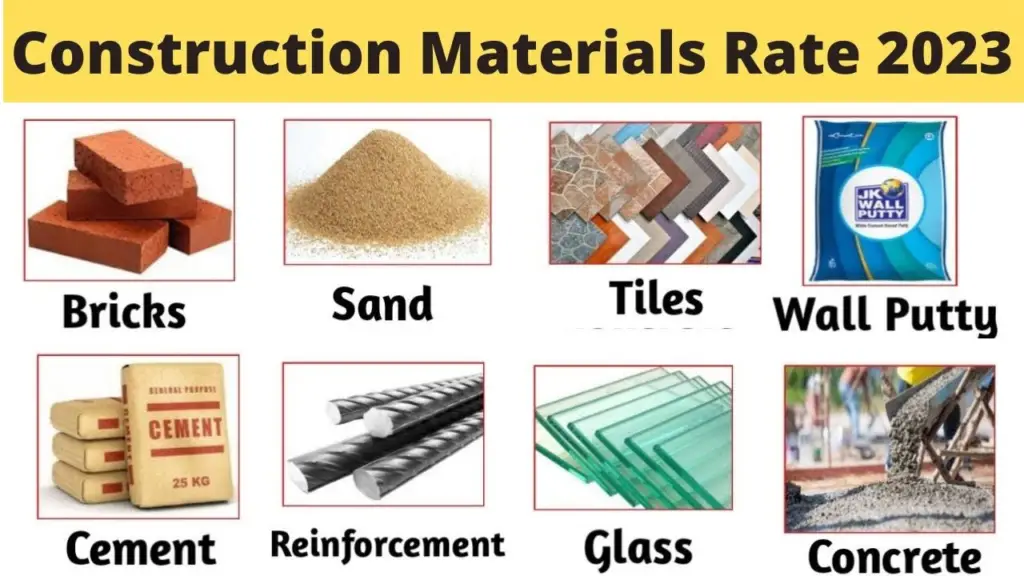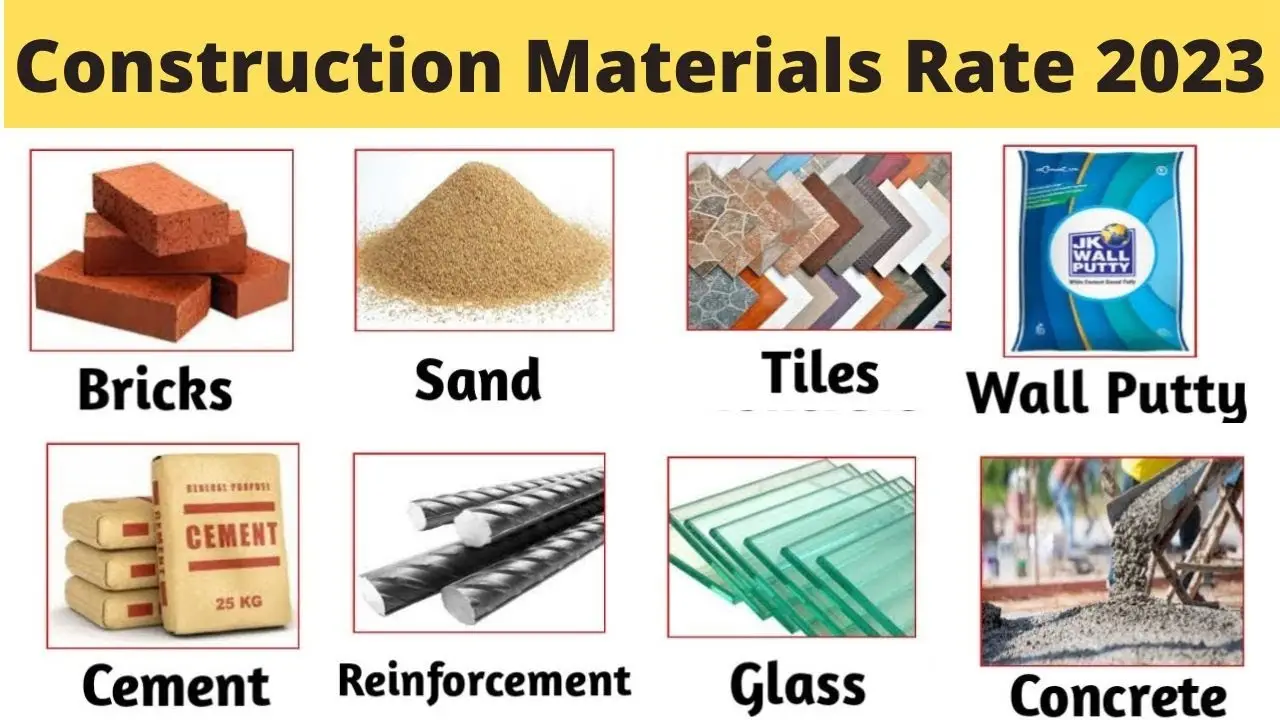Civil engineering projects require careful planning, designing, and construction to ensure they meet the needs of the community they serve. One crucial aspect of construction is material selection, which can have a significant impact on project costs and sustainability. In this article, we will discuss the importance of material selection in civil engineering projects, evaluate the impact of material selection on project costs and sustainability, and examine the role of material testing and evaluation in material selection.

Understanding Material Selection in Civil Engineering Projects
Material selection is the process of choosing the right materials for a construction project based on specific requirements, such as performance, durability, and cost-effectiveness. It is an essential aspect of civil engineering projects, as the materials used will impact the structure’s quality, performance, and lifespan. Material selection also plays a critical role in determining the project’s cost and sustainability.
Several factors influence material selection in civil engineering projects, including the project’s purpose, location, climate, and structural design. Other factors to consider include the availability of materials, their cost, and the environmental impact of their production and disposal. When selecting materials, civil engineers must consider the long-term performance of the structure, including maintenance costs, repair costs, and its impact on the environment.
Evaluating the Impact of Material Selection on Project Costs
Material selection has a significant impact on project costs. The type and quality of materials used can affect the cost of construction, maintenance, and repair over the structure’s lifespan. For example, using high-quality materials may increase the initial construction cost but can save money in the long run by reducing the need for frequent maintenance or repair. On the other hand, using low-quality materials may lower the initial cost but can increase maintenance and repair costs, leading to higher overall project costs.
The cost factors influenced by material selection include the material’s cost, transportation costs, installation costs, and maintenance costs. Choosing materials that are readily available and locally sourced can help reduce transportation costs. Additionally, selecting materials that require less time and labor to install can reduce installation costs, such as straightforward to install and cheap tiles. Materials that require less maintenance can also help reduce overall project costs.
To illustrate the impact of material selection on project costs, consider the construction of a bridge. The type of material used to construct the bridge, such as concrete or steel, can have a significant impact on the project cost. While concrete is typically less expensive than steel, it may require more frequent maintenance, increasing long-term costs. In contrast, steel may be more expensive initially, but it requires less maintenance, making it a cost-effective choice in the long run.
Evaluating the Impact of Material Selection on Project Sustainability
Material selection also has a significant impact on project sustainability. Sustainable construction is becoming increasingly important as we aim to reduce the environmental impact of construction projects. Sustainable construction involves selecting materials that are environmentally friendly, reducing waste, and minimizing energy consumption.
The sustainability factors influenced by material selection include the material’s environmental impact, its ability to be recycled, and its lifespan. Choosing materials that are sustainably sourced, such as renewable or recycled materials, can reduce the environmental impact of the project. Additionally, selecting materials that can be recycled or repurposed at the end of their lifespan can reduce waste and promote sustainability.
For example, selecting materials such as recycled steel or concrete can reduce the environmental impact of the project by reducing the amount of raw materials required. Additionally, materials that have a longer lifespan can reduce the need for frequent replacement, reducing waste and promoting sustainability.
Like Us on Facebook!
The Role of Material Testing and Evaluation in Material Selection
Material testing and evaluation play a crucial role in material selection. Civil engineers must ensure that the materials used in construction projects meet specific requirements, such as strength, durability, and environmental impact. Material testing and evaluation can help identify potential weaknesses in materials and ensure that they are suitable for the project’s requirements.
Subscribe Us on YouTube!
There are various types of material tests and evaluations, including mechanical testing, chemical testing, and environmental testing. Mechanical testing involves testing the material’s strength, toughness, and elasticity to ensure it can withstand the required loads and stresses. Chemical testing involves analyzing the material’s chemical properties to ensure it is safe for use and does not have any negative environmental impact. Environmental testing involves evaluating the material’s ability to withstand harsh environmental conditions, such as temperature changes, humidity, and exposure to sunlight.
Material testing and evaluation can also help identify potential weaknesses in the materials used in a construction project. For example, if a material is found to be susceptible to corrosion, engineers can take steps to mitigate this risk, such as adding a protective coating or selecting a different material.
Also Read: What materials make the best fencing for the cold climate ?
Conclusion
In conclusion, material selection is a critical aspect of civil engineering projects. The materials used in construction can significantly impact project costs and sustainability. Civil engineers must carefully evaluate the cost and sustainability factors when selecting materials for a project. Additionally, material testing and evaluation play a crucial role in ensuring that the materials selected meet the project’s specific requirements.
Civil engineers and construction professionals must prioritize material selection in their projects to ensure that they meet the needs of the community they serve while minimizing their environmental impact. By selecting sustainable materials and utilizing material testing and evaluation, civil engineers can ensure that their projects are built to last and contribute to a more sustainable future.
In summary, material selection in civil engineering projects is critical in determining the project’s cost and sustainability. Factors such as material cost, transportation costs, installation costs, and maintenance costs are influenced by material selection. Choosing materials that are locally sourced and require less maintenance can help reduce project costs. Additionally, selecting materials that are environmentally friendly and can be recycled or repurposed can promote sustainability.
Material testing and evaluation play a crucial role in ensuring that the materials selected meet the project’s specific requirements. By conducting mechanical, chemical, and environmental testing, civil engineers can identify potential weaknesses in the materials and take steps to mitigate these risks. Ultimately, prioritizing material selection and testing can contribute to a more sustainable and cost-effective construction industry.






















